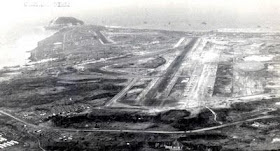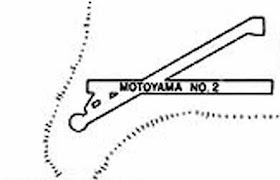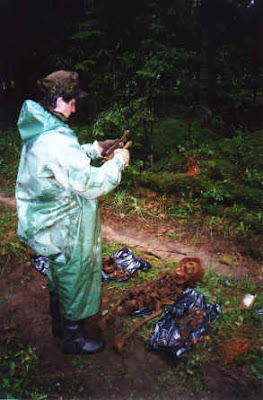U-1209 y HMCS Montreal
El U-1209 era un U-Boot del Tipo VIIc ordenado el 2 de abril de 1942 construido en los astilleros F.Schichau GmbH, en Danzig, y botado el 9 de febrero de 1944. Este U-Boot sólo estuvo bajo el mando del OL Ewald Hülsenbeck durante todo su servicio.
Sus tres primeras patrullas transcurrieron sin percances, pero también sin ningún éxito desde el 14 de noviembre de 1944 hasta el regreso de su tercera patrulla el 25 de noviembre de ese mismo año cuando alcanzó Farsund.
El 26 de noviembre volvió a echarse a la mar rumbo a aguas británicas, dónde debía patrullar el Canal de la Mancha y atacar el tráfico marítimo de la zona. El 18 de diciembre el U-1209 se encontraba navegando en inmersión cuando colisionó contra una roca quedando varado cerca de Wolf Rock. Ante la imposibilidad de rescatar y reparar al U-Boot el capitán ordenó abandonar la nave y fue barrenado. En el accidente murieron 10 de sus tripulantes, incluyendo al comandante, sobreviviendo 44 hombres de su tripulación.
La corveta canadiense HMCS Montreal (K319) encontró a los supervivientes alemanes y los rescató del mar. Esta embarcación estaba asignada al grupo EG C-4 con base en St. John (Newfoundland) y participó de forma muy activa en la escolta de mercantes hasta que en septiembre de 1944 se unió al Grupo de Escolta EG 26.
Fuente:
CANTIN, R. “The Sacrifice of the Royal Canadian Navy - 1910-1968, Volume 2” Quebec, 2010
NIESTLE, A. “German U-Boot losses during World War II ” Naval Institute Press 1998
BLAIR, C. “Hitler´s U-Boat war” Random House, 1998
WYNN, K. “U-Boat operations of the Second World War” Naval Institute Press 1998
English version
The U-1209 was a Type U-Boot VIIc ordered the April 2, 1942 built in the shipyards F. Schichau GmbH in Danzig, and launched on February 9, 1944. This U-boat was only under the command of Ewald Hiilsenbeck OL throughout his service.
His first three patrols passed safely, but without success since November 14, 1944 until the return of her third patrol on 25 November of that year when it reached Farsund.
On November 26, returned to take to the sea to British waters, where to patrol the Channel and attack shipping in the area. On December 18, 1209 U-immersion was sailing when he collided stranded on a rock near Wolf Rock. Unable to recover and repair the U-boat captain ordered abandon ship and was scuttled. The accident killed 10 of its crew, including the commander, surviving 44 men of his crew.
The corvette HMCS Montreal Canada (K319) found the Germans and rescued survivors from the sea. This boat was assigned to EG C-4 group based in St. John (Newfoundland) and participated very actively in the escort of merchant until September 1944 he joined Escort Group EG 26.
Source:
CANTIN, R. “The Sacrifice of the Royal Canadian Navy - 1910-1968, Volume 2” Quebec, 2010
NIESTLE, A. “German U-Boot losses during World War II ” Naval Institute Press 1998
BLAIR, C. “Hitler´s U-Boat war” Random House, 1998
WYNN, K. “U-Boat operations of the Second World War” Naval Institute Press 1998

































